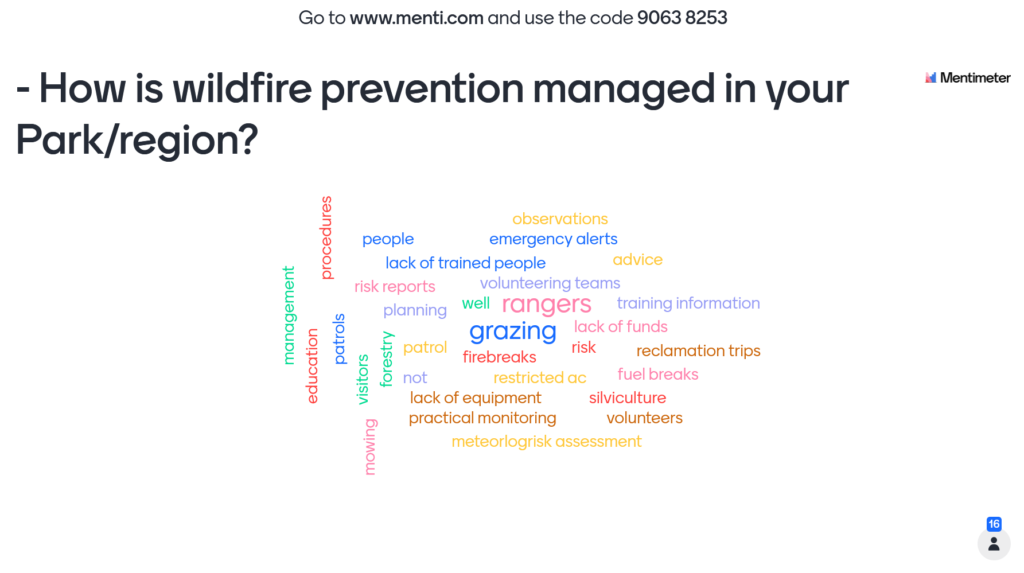Wildfire management and technology. How can we enable technology to increase resilience against wildfires?
Wildfires have always been a part of nature. Unfortunately, large-scale and more intense wildfires are becoming increasingly common and have a devastating impact on health & safety, ecological balance and cultural & socio-economic well-being. They also add to climate change. Therefore a holistic wildfire management approach is needed.
The prevention of wildfires and the level of readiness against one might be the most important aspect of wildfire management, since it is better to avoid than to cure. In most cases currently, the observation of wildfire sensitive areas is monitored by a combination of cameras and foresters/park rangers. While this already provides some level of anticipation against wildfires, it has its shortcomings:
- data provided by foresters and park rangers are limited to human capabilities and not continuously monitored;
- observation data is challenging to share between stakeholders so valuable input on forecasting models is lost;
- installed cameras still need to be monitored by an operator in order to detect a wildfire.
In this webinar, we looked at how technology can help prevent wildfires and relieve some of the burden of those who work in Protected Areas. It was organised together with Senhive, with whom we partnered up at the start of this year.
Webinar programme
- Welcome and Introduction to the webinar
By Esther Bossink – EUROPARC´s Communications Officer.
Following a short welcoming session, we wanted to learn a little more about wildfire prevention management in different Parks and regions.
Take a look at our Mentimeter cloud to see the most common answers:

How is wildfire prevention managed in your Park/region
- EFFIS: Satellite-based risk management
By Jesús San-Miguel-Ayanz – Director European Forest Fire Information System (EFFIS) Programme – Joint Research Centre (JRC) Disaster Risk Management Unit, Italy.
Jesús has a PhD and MSc in Wildland Information Science, with majors in Remote Sensing and Geographic Information Systems from the Forestry Department at the University of California-Berkeley, U.S.A. He also has a Forest Engineering Degree from the Polytechnic University, Madrid, Spain. Jesus works at the European Commission Joint Research Centre and coordinates and leads the development of the European Forest Fire Information System (EFFIS) and the Global Wildfire Information System (GWIS). His publication list is available here.
This webinar also gave us a chance to acquire more information about the European Forest Fire Information System (EFFIS). It was established by the European Commission (EC) in collaboration with the national fire administrations to support the services in charge of the protection of forests against fires in the EU and neighbouring countries. EFFIS is supported by a network of experts from 43 countries and provides satellite-based information on the current fire season in Europe and in the Mediterranean area. This includes today’s meteorological fire danger maps and forecasts up to 9 days, daily updated maps of hot spots (active fires) and fire perimeters.
Learn more about EFFIS by downloading the full presentation here:
EFFIS_GWIS_ wildfire management webinar
- Sen-Eye: Camera-based wildfire detection
By Thomas Petracca – CEO, Senhive, Belgium.
Thomas started his career as a telecommunications architect. In 2008 he started his own company by providing IT architecture services to several Fortune 100 companies. His expertise and drive resulted, among others, in the management & design of the Belgian Antarctic station. This eventually inspired him to start a company specialised in remote sensing and led to the creation of Senhive.
Sen-Eye is a camera-based autonomous wildfire detection system. It uses AI to autonomously detect wildfires and notify involved stakeholders. Sen-Eye can be installed on any type of IP camera and – by fusing EFFIS satellite data with smart power management – it can be deployed in off-grid areas where no power nor connectivity is at hand.
Get more insight into Senhive & Sen-Eye in their presentation here:
Quiz
The last session of the webinar was dedicated to the short Quiz. A lucky participant who paid close attention during all the presentations and had the most correct answers won a special prize: a 1-year Sen-Eye Cloud licence valued at €3500. Congratulations!
Watch the full recording of the webinar here.
This webinar is co-created by EUROPARC and Senhive and is powered by: